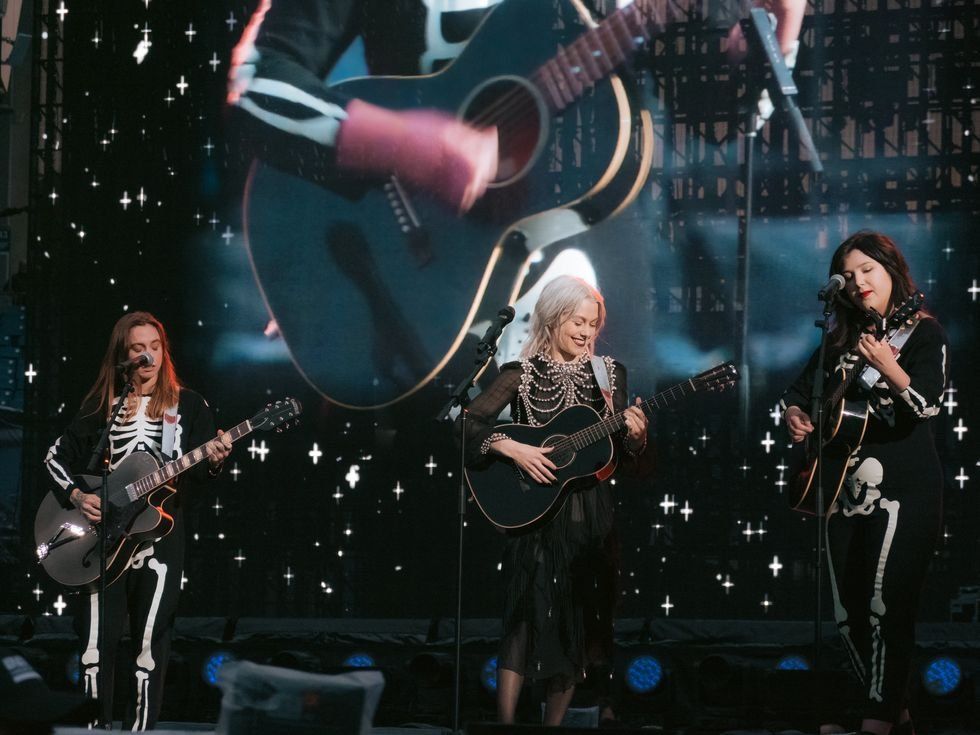If you're a fan of any kind of dramatic or romantic form of entertainment, then you've probably been familiarized with the newest addition to our guilty-pleasure hospital romance, "Five Feet Apart." And let's face it: when you mix Cole Sprouse, Haley Lu Richardson and a seemingly unbeatable obstacle between their love, you've got yourself a hit movie.
But if you are an avid book-reader like myself and just had to see which one would probably inevitably die in the cliched "sick flick" (P.S., some spoilers ahead!), you would find it hard to ignore the looming differences between the book's more realistic portrayal and Hollywood's glorified edition.
Let's discuss, shall we?
1. The reality of a terminal illness
It feels as though we as movie consumers have been completely desensitized to the reality of terminal illnesses. Yes, we may shed tears when our favorite non-smoking cigarette-lover (I'm looking at you, Augustus Waters) dies, we may come to the trivial conclusion of "death sucks!" and we may gush on Twitter about how heartwarming it was. But sometimes it feels like we are so obviously missing a point to this all. Unlike other YA movie adaptations, the book and the film were created harmoniously, working together to construct one narrative. Rachel Lippincott, author of the book, however, adopts more weight to topics like living with terminal illnesses.
Contrary to the movie, the mental effects of the disease play a heavy role in the novel. It isn't briefly alluded to when something sad happens. It is an inevitable cause and effect that Lippincott demonstrates with every instance. This was appreciated by many people battling cystic fibrosis, all who agree that the trope of "sick flicks" always neglects this idea. While we see hints of it in the movie, the book made this one of the centric themes.
2. The importance of platonic relationships
One glance at the movie and you know it is a romance. And you'd be right in assuming so, as the movie adapts the book strictly as a conflict between Stella (Haley Lu Richardson), Will (Cole Sprouse), and the cystic fibrosis that forces them to remain six feet apart at all times. The book, however, offered much more than that. Main scenes in the novel displayed the complex relationship that Will had with his overbearing mom, the guilt that Stella felt in needing to reunite her divorced parents, the isolation that Poe (Moises Arias) enacted on himself from his ex-boyfriend and his deported parents. All of these aspects contributed to a larger idea than just star-crossed lovers. By presenting the main characters as more than just a romance, it made the reader empathize with not only the fictional heroes but with the people whose lives are defined by this struggle daily.
3. The meaning of the ending
This difference had me sitting in my seat after the movie ended and the credits rolled, mouth hung wide open. For those who have not read the book, Lippincott ends it with a fast-forward to eight months later, where Stella and Will happen to reunite in an airport. They're both going to separate places, and Will is described as looking sickly, leaving us to assume that his time is dwindling while Stella's is growing. But they are happy to see each other, not only because they still have feelings between them, but because they have both decided to live their lives to the fullest... exactly what they had made their grand sacrifice for. Stella approaches him, first at six feet apart, then at five. Lippincott leaves it relatively open for interpretation (will they get back together? Will they just stop by and say hi before remembering their sacrifice?).
Yet the main idea still persists: they have both decided to live as much as possible and to fulfill all of their wishes before they die, whenever that may be. It was the ending that took a relatively cheesy romance novel and altered it into something so much more. With this ending, it is expanded to a celebration of life, even in the darkest of times, and how life is about more than just surviving. We didn't get the happy ending we wanted between the two lovers, but we got so much more. So why did the movie adaptation fall so short in this area?
* * *
In essence, if you haven't read the book, the movie is a cute and heartfelt story of a seemingly impossible romance. I would recommend it for a rainy day with a blanket and some popcorn. It won't alter your way of thinking, as it could have if it had been adapted more sternly from the novel, but it is, with all things considered, an interesting story that deserves to be told.




 Energetic dance performance under the spotlight.
Energetic dance performance under the spotlight. Taylor Swift in a purple coat, captivating the crowd on stage.
Taylor Swift in a purple coat, captivating the crowd on stage. Taylor Swift shines on stage in a sparkling outfit and boots.
Taylor Swift shines on stage in a sparkling outfit and boots. Taylor Swift and Phoebe Bridgers sharing a joyful duet on stage.
Taylor Swift and Phoebe Bridgers sharing a joyful duet on stage.













